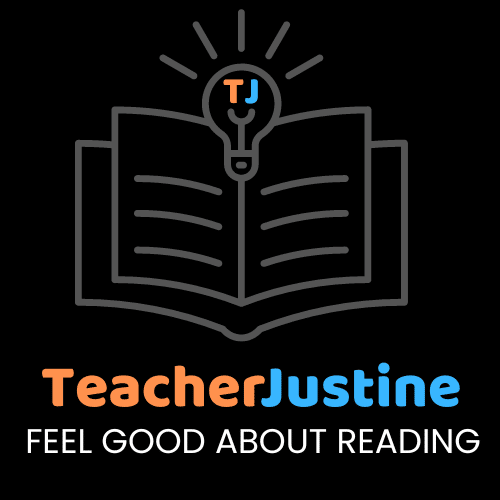Teacher Justine contains affiliate links and is a member of the Amazon Services LLS Associates Program. If you make a purchase using one of these Amazon links, I may receive compensation at no extra charge to you. See my disclosure policy for more information.
Whole Language & Phonics: A Tale of My Two Daughters’ Reading
Whole language and phonics: which is better? The different paths that my two daughters took, through their different schooling experiences (because of where I worked as a teacher) to learn to read, taught me that:
- 40% of children will learn to read after a year of instruction in first grade no matter the method and will become skilled readers.
- Another 40% of children will learn to read probably through a whole-language or balanced literacy approach but they will become unskilled readers.
- 20% of people are dyslexic, and as children will not learn to read unless they are taught phonics in a direct, explicit, systematic way, and preferably with one-on-one instruction.
- AND only 4% of those dyslexic children will receive intervention services in school.
This is the story of how I learned this first hand, and how raising these two daughters is linked to my becoming a teacher and a top online reading tutor.
Becoming a teacher
Seventeen years ago, my first daughter brought me into my teaching career. When she was nine months old, I was reading an article on Waldorf education in Mothering Magazine. I had never heard of Waldorf before but immediately I was hooked. As I was reading the article, my heart started beating faster and I sat up straighter. Halfway through the article, I knew I wanted this kind of education for my daughter. By the end of the article, I wanted this kind of education for myself.
I was so excited when the article mentioned teacher training. I immediately started researching Waldorf teacher training. It sounded amazing. You got to take courses in knitting, woodworking, metalsmithing, painting, clay, chalk drawing, storytelling, singing, recorder playing, eurythmy (whatever that was), and anthroposophy (never heard of it). Note that there were no classes on reading instruction per see.
There were also classes on child development and the study of man. For the first time since I had quit my graduate program in Italian for the work world, I felt whole and interested. This was my second chance to immerse myself in the humanities but this time with a practical end: Teaching children. I felt a call to become a teacher. Loud and clear.
I enrolled in a 3-year teaching training course the following month. My daughter was ten months old. This was the perfect path to parenting for me. I was studying child development along with my developing child. We learned together. I memorized songs, nursery rhymes, and fairy tales and she followed along with delight. And she went to Waldorf preschools and kindergarten. She was immersed in rich oral language which proved to be a solid foundation for her when it became time to learn to read.
Waldorf education believes in providing a beautiful and natural world for young children. The preschools and kindergartens are like an old-fashioned home where the mother is there baking, making crafts, singing, and telling stories. And the children imitate these things in their play. Writing letters and matching letter symbols to sounds is held off until first grade and even then it is done in a natural way, not systematically and explicitly.
All of this made sense to me. I was enamored with the Waldorf philosophy and tried to follow it to a tee. My daughter cut carrots with me in the kitchen. She mixed water, sand, dirt, leaves, and flowers and made “cakes” in the backyard. I didn’t let her watch tv. And I didn’t teach her the alphabet (but she did pick it up on her own). She taught me that some students do respond well to the whole-language method.
I also remember telling a teacher friend about my Waldorf teacher training. Trying to explain to her how amazing it was. She said “oh, that is a whole-language” method of teaching. I felt indignant. How could she reduce the Waldorf philosophy of life to a reading method? It was so much more. It was whole-child, whole-human, whole-world, whole-universe. At the time, I didn’t know what she meant by whole-language, but now I agree with her.
My second daughter was born three years after my first one. I continued my Waldorf lifestyle with her. However, when she was only 2 ½, I started my first year teaching at a Waldorf charter school. I was so excited because my older daughter got to go to the Waldorf kindergarten at my school where she would be nurtured and protected from early intellectualization.
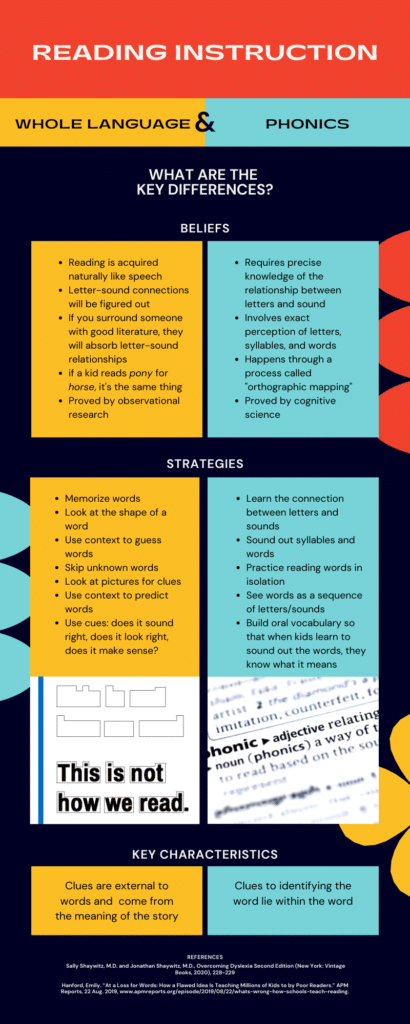
But my younger daughter had to go to a traditional pre-school. This was very difficult for me because I was so dedicated to the Waldorf philosophy and I felt she would be harmed by early teaching of the alphabet. However, the benefit was that her preschool was on my campus so we all drove to school together and both my children were very close to my classroom. I could see them during recess.
That first job of teaching with two children under 6 was very difficult. Because it was a charter school, I also had to enroll in a state teacher credential program. It was so hard to reconcile the two very different approaches to teaching. One was all about assessments, reading levels, and learning objectives while the other was about recreating the idyllic past.
In first grade, I taught one letter over three days through the Grimm’s fairytales. I memorized the stories and told them. Then, I guided the children through a drawing from the story. On the third day, I lifted a letter out from the drawing and the children copied me. Then we wrote a word starting with that letter. This is a very beautiful and slow way to learn the alphabet. It seems like it would be the answer for everyone. But my second daughter would teach me that this isn’t true.
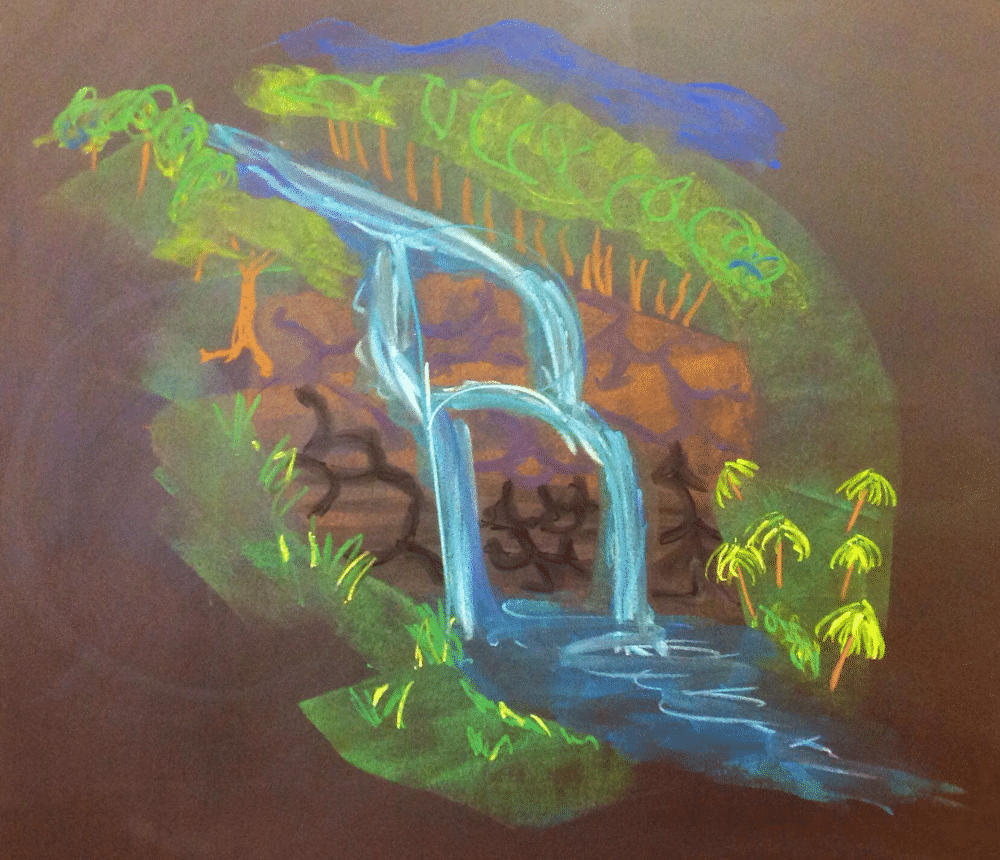
After that first year of classroom management of 28 first-graders and their parents, raising two children under six, and taking courses for my credential, I was exhausted. I couldn’t go on. I was devastated that my dream was over. Waldorf education had been the answer to everything in life for me. My children were going to get a beautiful Waldorf education and grow into caring, creative gentle souls. I was going to have a fascinating career full of imagination and depth. And now it was all over.
With no jobs, our family moved to Rosarito, MX where we had a place to live. I enrolled my daughters in a bilingual Spanish/English school. I finished my credential and began teaching at the bilingual school as a third and fourth-grade English teacher.
Although my dream of Waldorf education for my daughters was over, I consoled myself with the idea of bilingual education. I have always loved all romance languages so I thought this will be the new plan.
My older daughter entered bilingual first grade. She did not know any Spanish and she did not have formal learning of the alphabet. But she learned to read in both English and Spanish within a few months. She is part of the 40% of children that will learn to read no matter the method.
What I learned about whole language and phonics from my daughters in early childhood
- That I connect easily with kids. Before having children, I did not realize I would like being around them so much. Kids scared me a little. Plus I had bad memories from being a babysitter when I was twelve years old. But having kids changed everything. I loved parenting in the early years. And my daughters are the ones that taught me this.
- That I am a good teacher. I had considered teaching a few times in my life, but I was always turned off after reading the list of courses and requirements to become a teacher. But when my daughter led me to Waldorf teaching, I realized I am a good teacher because I connect with kids and engage them with my love of learning and curiosity. (But I’m not that great at all the classroom management and faculty meetings.)
- That Waldorf is not the answer to everything. Because Waldorf communities can become cultlike in their strong belief systems, they can become dogmatic and hurtful. And a whole-language method does not work to learn to read well for 60% of children.
- To not cling to one philosophy or method of education. Many parents develop a strong belief system for parenting and education in the early years of their children’s lives. They want one kind of lifestyle or education for their children so badly that they will do anything to have it, including ridiculous commutes. But life happens. Jobs end and people move. It can be much healthier to go to a walkable school down the street even if it’s not your original dream.
- That 40% of children will learn to read after a year of reading instruction in first grade, no matter the method. These kids will learn to read whether they are in an expensive private alternative school or a public academic school. My older daughter’s experiences of attending both Waldorf and Bilingual school taught me this.
- That 40% of children will not learn to read well in a whole-language approach and 20% will not learn to read at all in this approach. In this view, reading happens naturally like the eruption of your second teeth, and that they will absorb letter-sound connections like a sponge absorbs water. However, these children must receive systematic, explicit phonics instruction in order to make the connection between letters and sounds. My younger daughter’s experience taught me this.
- That Waldorf does provide rich oral language comprehension and this is a foundation to learning to read. Both dyslexic and non-dyslexic children benefit from a literary-rich environment.
Becoming a well-rounded teacher and a great tutor
My younger daughter did end up having the Waldorf experience that I had wanted so badly. After two years in Mexico, we came back to California. I got a job as a preschool teacher in a small Waldorf school and my second daughter joined the first-grade class. The school only went up to first grade at the time, so my older daughter had to enroll in regular public school.
Before starting the Waldorf school, my younger daughter attended public school kindergarten. The teacher had noticed some red flags that she was not learning the alphabet and not making the connection between letters and their sounds. I was not concerned at this time because I was still so convinced that Waldorf was the answer to everything and that she just needed more time to play and climb trees.
So she and I drove together every day to our sweet nurturing school. At some point, I admitted to myself that she needed help so I started taking her to a tutor after school. I couldn’t tell the Waldorf teacher this or she would have gotten mad at me. My daughter started to make a little progress, but by the end of second grade, she still could not read.
One day I was talking to my neighbor who was a teacher and she mentioned that I could use the public school system to get her assessed. So I started this process. The school psychologist came and observed her at the Waldorf school and she also went to them to do a lot of testing. After extensive testing, they concluded that she qualified for an IEP with a specific learning disability.
I had also just started a new job that year at an Italian bilingual school that required a long commute. It was getting difficult to make sure my daughter could get to her Waldorf school. So when the public school told me there was an opening at the elementary school down the street from our house, I decided to transfer her there where she could get the direct, explicit instruction she needed. Her Waldorf teacher told me I was making a mistake and now my daughter would “be in the slime.”
After two years of being pulled out an hour a day for direct one-on-one instruction, she learned to read. I am so glad that I finally understood that some children must have systematic, explicit phonics instruction and that a whole-language approach will not work for them.
For the next five years, I worked at an Italian bilingual school. For the first two years, I was in the 100% Italian immersion preschool that did not teach any reading. The philosophy of the school was “Reggio”. Some core beliefs of this philosophy are:
- Children are capable and competent and can be trusted to participate in their own learning.
- The environment is the “third teacher” so it must be very esthetic and offer opportunities to explore.
- Play is the mechanism by which children learn (same as Waldorf).
Then for three years, I became an English teacher in the Italian bilingual elementary school. The first year I was left up to my own devices and taught reading and writing in any way I could, based on my philosophies and any resources I had or created. But I only had 30 minutes a day to do it three days a week because of the language immersion ratio of 80% Italian/20% English.
The school had just purchased the Lucy Calkins Readers and Writers Workshop curriculum but they hadn’t trained the teachers to use it yet. The following year, we received training in Writers Workshop. I loved this method and the children loved my lessons. I felt so empowered as a teacher and their writing improved visibly and quickly. Again, I had to adapt it to fit into the very little time I was allowed for English instruction. I tried to sprinkle some phonics in too, but not in a systematic way.
In my third year, we received training in Readers Workshop. I continued to just teach writing and some phonics because of the very little time the children received for English instruction. The kids were exposed to some English books in the classroom and in the library but they didn’t receive any systematic reading instruction.
Although I love the idea of bilingual education and I loved being able to use my Italian degree, I do not see how this is a good way to learn to read and write well in English. There is not enough time and the school does not have a good plan for the teachers. Furthermore, now I know that Readers workshop is also a whole-language or balanced literacy method and this is not an effective way to teach children to read. In contrast, I learned from my daughter’s experience through her intervention program and the IEP process, that explicit and systematic phonics instruction works.
My philosophy of education was being tested again. I loved working at the Italian school because it was so great working in a community of Italians where I could speak in Italian. Italian had been my first passion and it will always be part of me. But I was not convinced that bilingual education is for everyone. It often felt that the kids were learning to speak neither their mother tongue nor their second language very well.
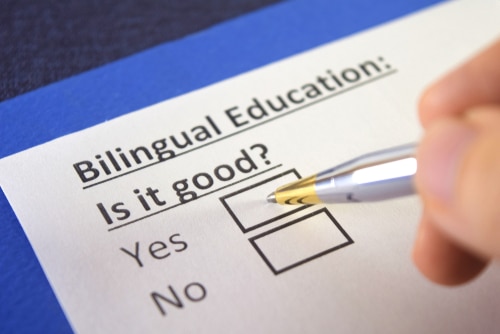
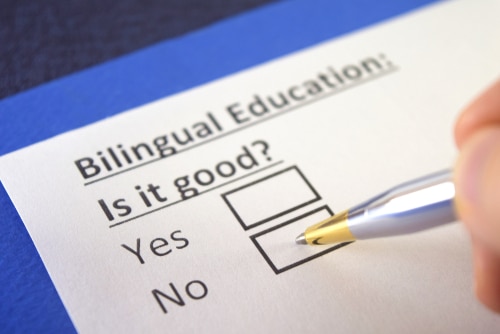
And a two-hour commute a day was taking its toll. It was hard to be so absent from my own children. When the pandemic struck it was a mixed blessing because suddenly I was home with my kids. During those months, I realized I could never go back to such a long commute even for something I loved so much – Italian.
The next year I started working as a fourth-grade teacher in a public school near me. I was on Zoom for half the year and during this time I worked one-on-one with several students during office hours. This was an amazing experience because I was so much more effective with them than in a whole class situation. This is when I started to think about doing online tutoring for struggling readers. This would also allow me to keep an eye on my daughters better.
My younger daughter really struggled on Zoom and her grades began to slide. She started self-diagnosing with ADHD. I started reading about Dyslexia and ADHD and how they often come together. I learned how 20% of people have dyslexia but only 4% receive services in school. And even those who do receive services, eventually are disqualified because, with all the intervention, their grades improve. However, they will always have dyslexia and it’s actually more important than ever to keep accommodations in place when the academics start to get more challenging.
What I learned about whole language and phonics during my daughters elementary years
- That early intervention is vital for struggling readers.
- That the IEP can be very helpful but it doesn’t last long enough for kids with dyslexia.
- That being physically present for my own children is just as important now as when they were very young.
- That I have a rich background with experience in different reading instruction philosophies and methods, and now I am not tied to a district or a school that has invested lots of money into their curriculum, so I can use cognitive research to base my decisions on reading instruction.
- That bilingual education comes at the expense of a systematic English reading program.
- That I love tutoring kids online because I can see and quantify such quick gains with explicit, systematic one-on-one instruction.
- Online tutoring allows me to tutor children from 5 years to 14 years old anywhere in world. I love working with all the different ages especially now that my own daughters are in high school.
Conclusion: Confident tutor helping kids with reading
I am so excited to be helping struggling readers through direct, explicit, systematic, one-on-one online tutoring. And I feel so excited and confident to know why phonics-based reading instruction is the best way to teach ALL children to read. I have learned this from my own daughters’ experiences learning to read in a variety of schools and from my own background trying out different philosophies and methods as a teacher.
Parents feel so desperate when they see their child struggle and nothing seems to work. Most schools are still using a whole-language or balanced literacy approach to teaching reading because they have invested so much money in those curriculums, even though cognitive science has proven that that is not going to produce skilled readers. Skilled reading only comes from recognizing a word as a sequence of letters that represent sounds.
Please contact me for a FREE reading assessment and personalized plan for your child.
